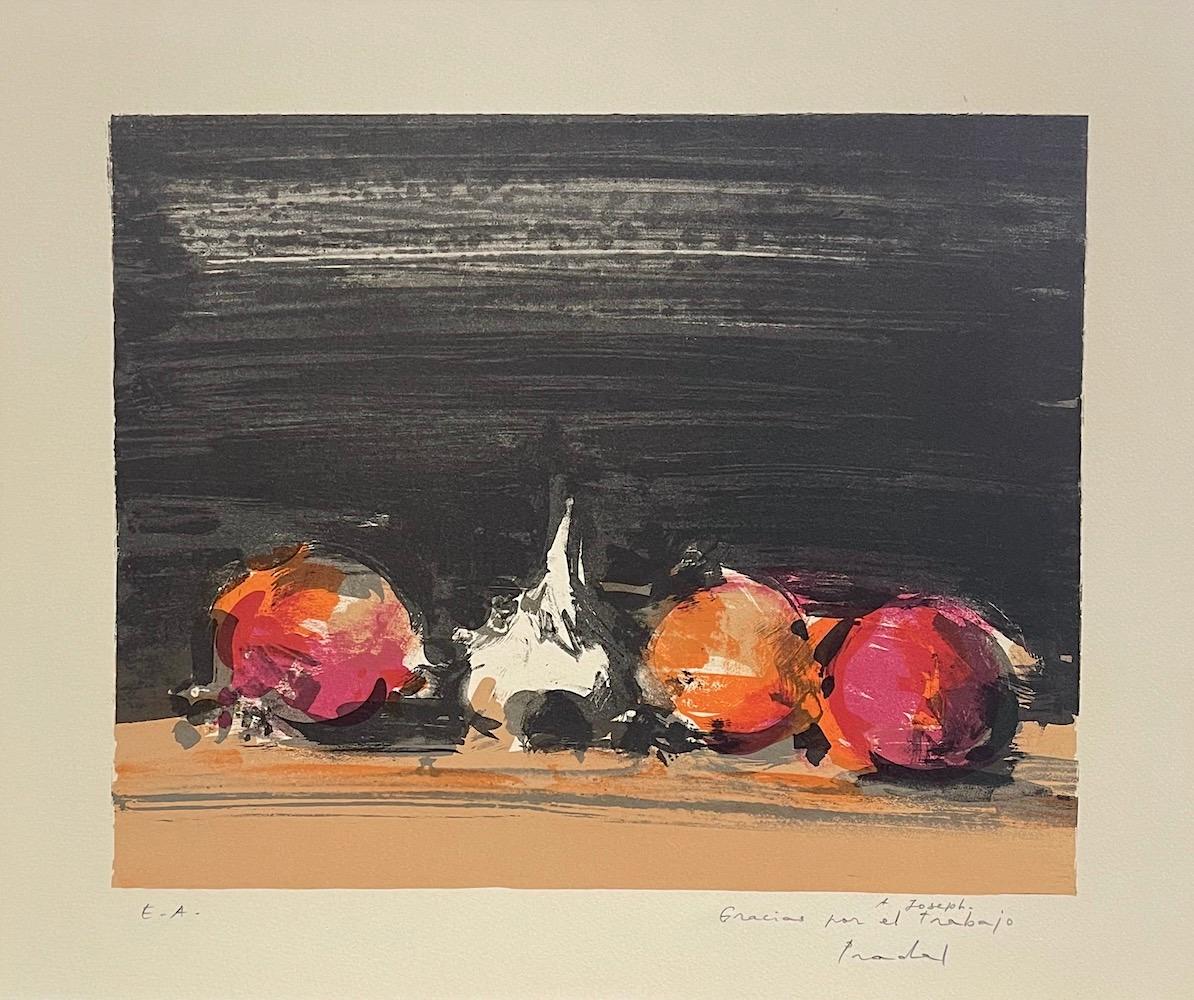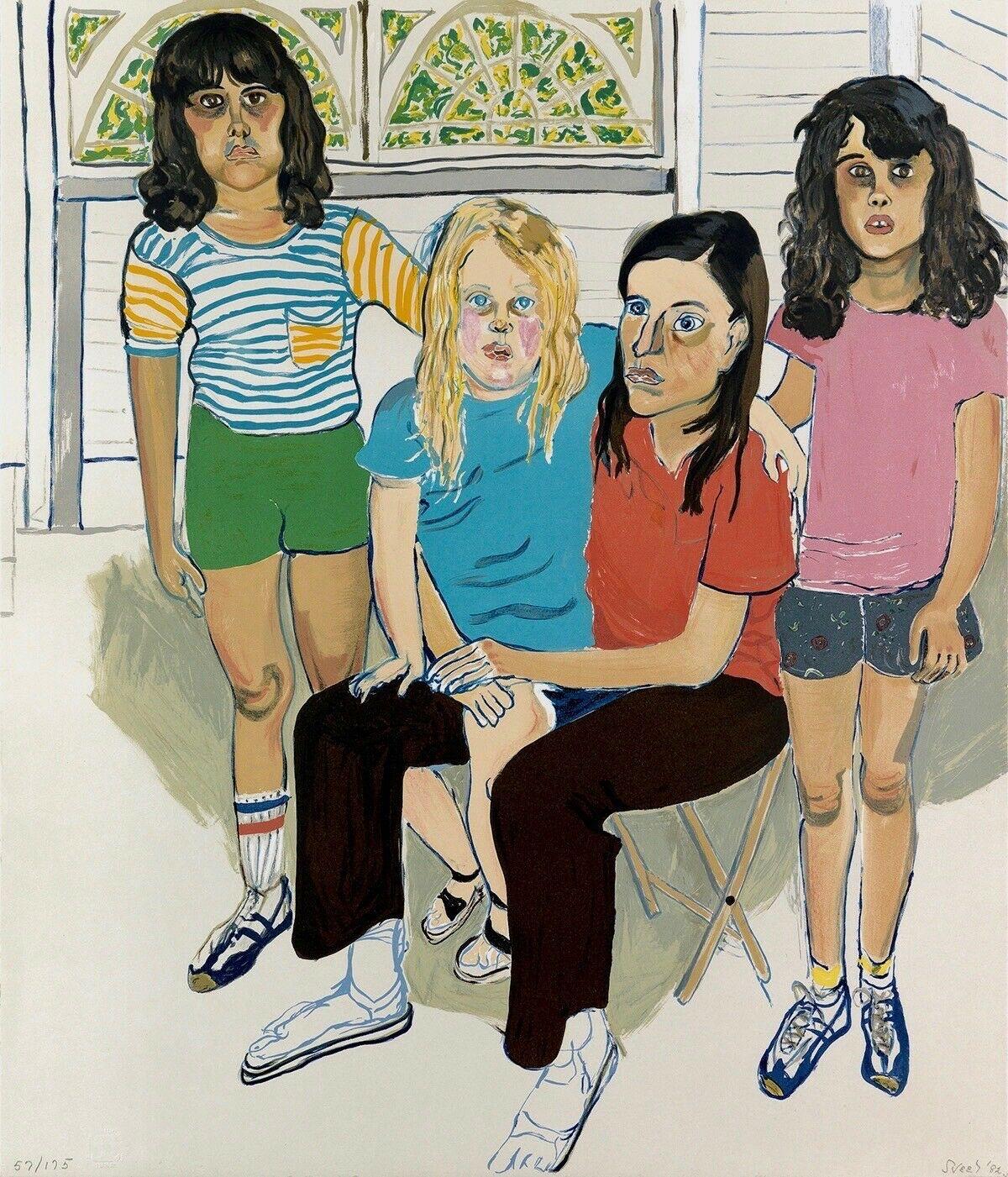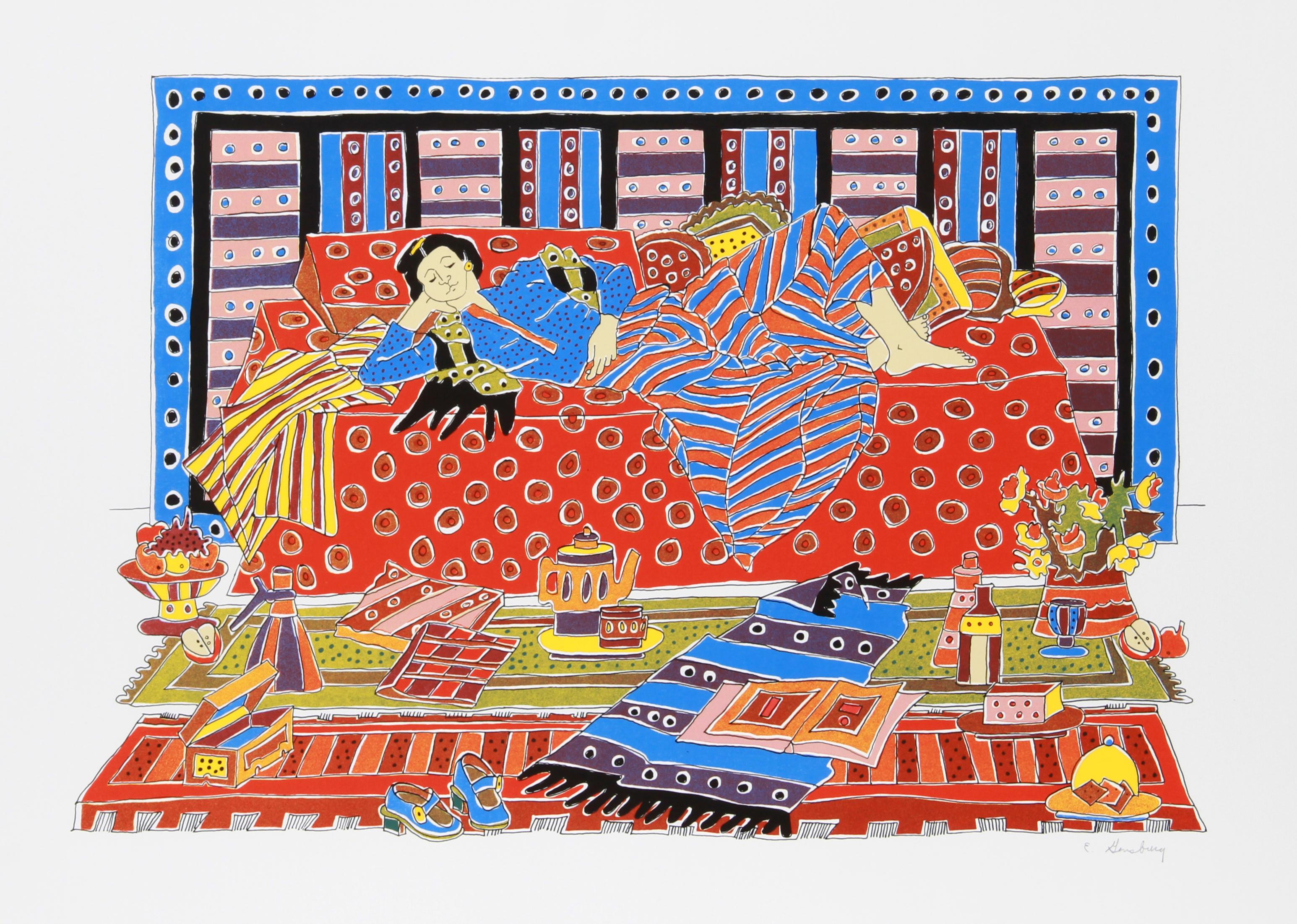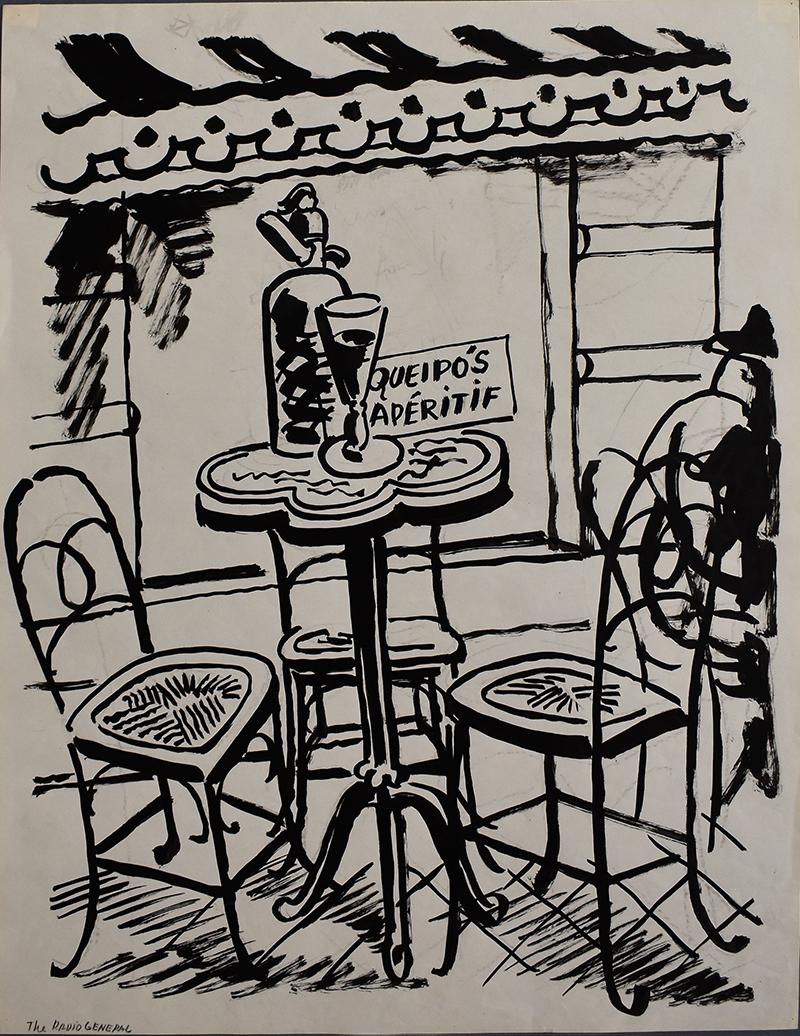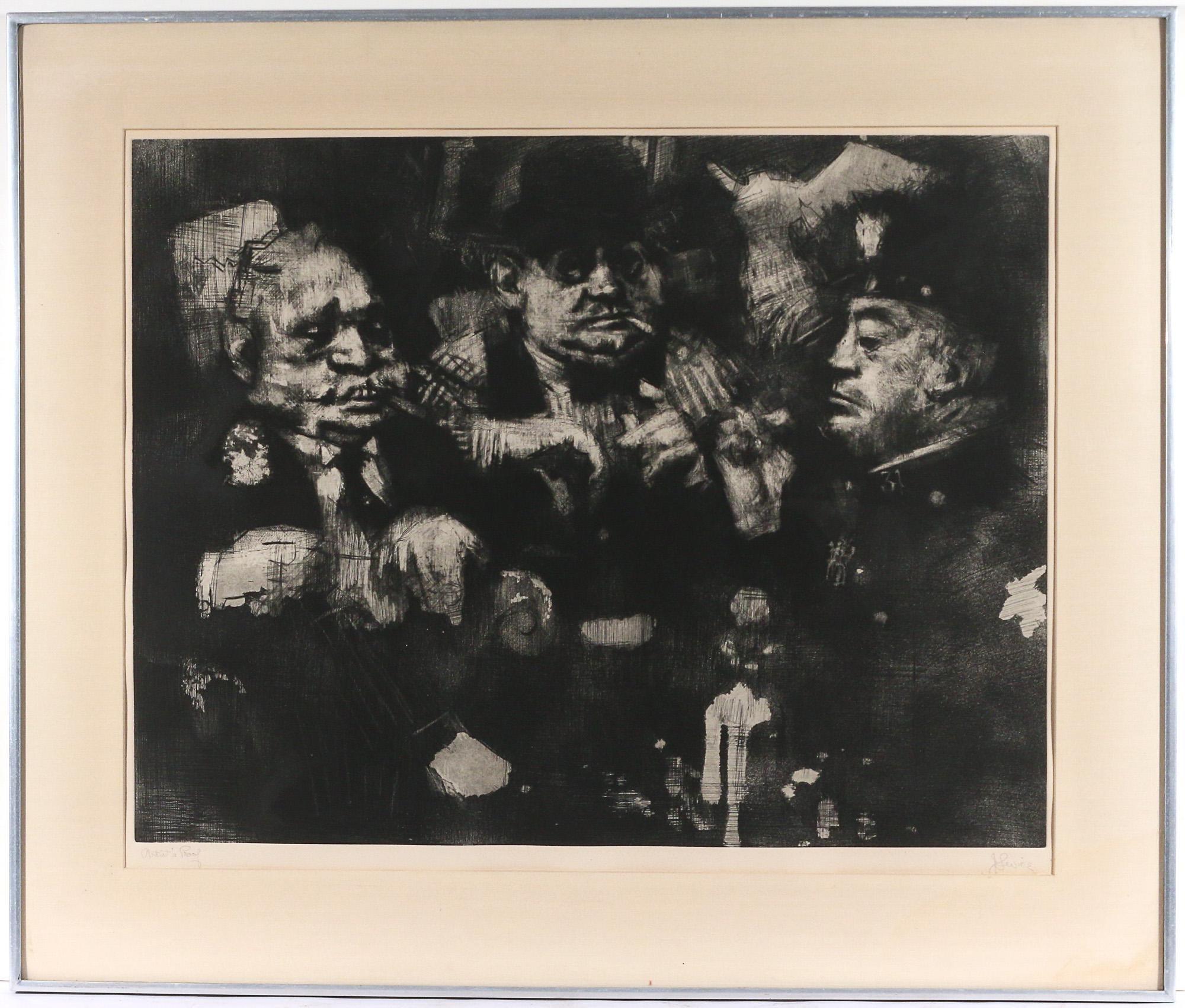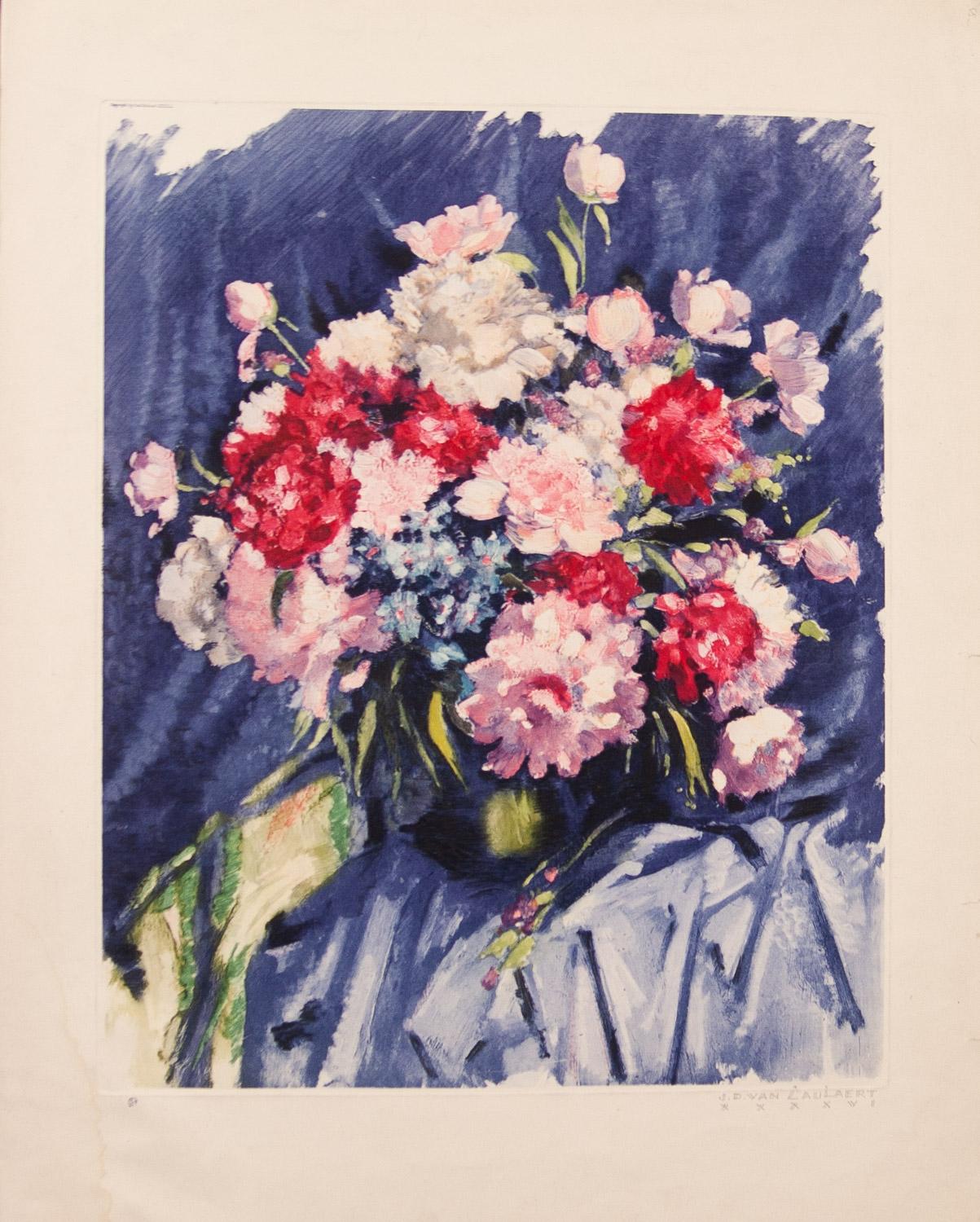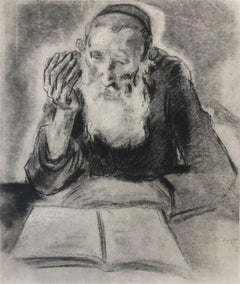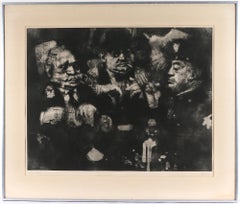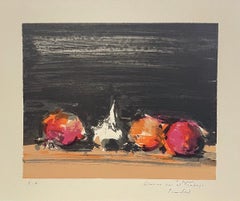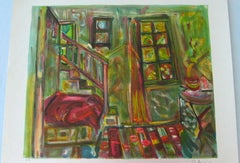
Atelier Interior, Lithograph
View Similar Items
Want more images or videos?
Request additional images or videos from the seller
1 of 8
Pinchus KrémègneAtelier Interior, Lithograph
About the Item
- Creator:Pinchus Krémègne (1890 - 1981, French)
- Dimensions:Height: 21.25 in (53.98 cm)Width: 26.25 in (66.68 cm)
- Medium:
- Movement & Style:
- Condition:
- Gallery Location:Surfside, FL
- Reference Number:1stDibs: LU382116532
About the Seller
4.9
Platinum Seller
These expertly vetted sellers are 1stDibs' most experienced sellers and are rated highest by our customers.
Established in 1995
1stDibs seller since 2014
1,549 sales on 1stDibs
Typical response time: 1 hour
More From This SellerView All
- Judaica Jewish Shtetl Etching Yeshiva Talmudic Study Vintage Chassidic Art PrintBy Paul JeffayLocated in Surfside, FL"Qui a raison?" Chassidic boy, Yeshiva student with open book. Judaica, Jewish scenes from a ghetto. Saul Yaffie, a.k.a. Paul Jeffay, (1898–1957) was a Scottish Jewish artist. Known for his charming French street scenes as well as his judaica work. This is signed in the plate and dated 1931 in the print. This is done in a style similar to the works of the early Bezalel School artists Hermann Struck and Jakob Steinhardt. This lithograph, by artist Paul Jeffay depicts a Judaic Shtetl interior scene with great charm and sensitivity. Saul Yaffie was born in Blythswood, Glasgow on 29 April 1898. His mother was Kate Yaffie (née Karkonoski), and his father, Bernard Yaffie, was a master tailor. Like many Russian Jews, Kate and Bernard Yaffie fled persecution in Russia during a wave of anti-Jewish pogroms triggered by the assassination of Tsar Alexander II in 1881. Saul's father was naturalised as a British citizen by the time that Saul himself was three; a Bernard Yaffie is recorded as living at Abbotsford Place in the old Gorbals, where the young Saul spent the early years of his childhood. The Yaffies were not unique in their situation: the Gorbals was the centre of Scotland's Jewish community and home to a large proportion of Glasgow's immigrants throughout the early 20th century. Over time, there was a movement to some of the more affluent communities in Glasgow, such as Pollokshields and Garnethill, as many Jewish families gradually improved their social and economic situation. Like these, the Yaffies also experienced a time of good fortune, moving to a more agreeable address on Sinclair Drive, Cathcart as Bernard's tailoring business prospered. Saul attended day classes in drawing and painting, modelling, and life drawing at The Glasgow School of Art from 1912 to 1919. During the First World War, he was required to interrupt his studies to serve in the King's Own Scottish Borderers in 1916/17. Although subject to military conscription, Yaffie reached the rank of corporal during his service. Prior to his conscription Yaffie engaged in munitions work, something that was recorded in the GSA's student registers. The post-war economic depression that affected the country during the 1920s, also affected the Yaffie family directly: Bernard Yaffie's business suffered greatly, and the family eventually emigrated to Canada. Saul did not emigrate with his family, choosing instead to stay in Europe, and relocate to jazz age Paris where he continued his artistic practice. Now married, Saul sought to escape persecution in Europe by returning to the UK before the Second World War with his wife, Estusia. The two settled in Manchester, but returned to France after the war. In his memoires ‘Bronze in My Blood’, German-born sculptor Benno Schotz describes a Saul ‘Yaffe’, one of only three other Jewish students who attended The Glasgow School of Art at the time. (Schotz himself was exempt from joining the forces because he was ‘not yet a British subject’, and was engaged in war work in the drawing office of John Brown’s shipyards). On the outbreak of the war, Schotz writes, Yaffie won a poster competition to be displayed in Glasgow tramcars at the beginning of the 1914-18 war – his winning design depicted a woman with a child in her arms, fleeing from a fire behind her. While on leave from service, the young Saul told Schotz he had briefly been stationed in the same unit as Jewish American sculptor Jacob Epstein. This was most likely the 38th Battalion of the Royal Fusiliers, also known as ‘the Jewish Legion’, one of five Jewish battalions raised during WW1. ‘He told me how incongruous it was’, remembers Schotz, ‘to See Epstein scrubbing the floor of their hut, with a large diamond ring on his finger’. His work is included in the collection of the Ben Uri Museum in London along with Lucian Freud, David Bomberg, Mark Gertler, Josef Herman, Jankel Adler, Feliks Topolski...Category
20th Century Expressionist Interior Prints
MaterialsEtching
- Judaica Jewish Shtetl Etching Hasidic Rabbi at Study Vintage Chassidic PrintBy Paul JeffayLocated in Surfside, FLOlder Chassidic rabbi learning with open book, Judaica, Jewish scenes from a ghetto. Saul Yaffie, a.k.a. Paul Jeffay, (1898–1957) was a Scottish Jewish artist. Known for his charming French street scenes as well as his judaica work. This is signed in the plate and dated 1931 in the print. This is done in a style similar to the works of the early Bezalel School artists Hermann Struck and Jakob Steinhardt. This lithograph, by artist Paul Jeffay depicts a Judaic Shtetl interior scene with great charm and sensitivity. Saul Yaffie was born in Blythswood, Glasgow on 29 April 1898. His mother was Kate Yaffie (née Karkonoski), and his father, Bernard Yaffie, was a master tailor. Like many Russian Jews, Kate and Bernard Yaffie fled persecution in Russia during a wave of anti-Jewish pogroms triggered by the assassination of Tsar Alexander II in 1881. Saul's father was naturalised as a British citizen by the time that Saul himself was three; a Bernard Yaffie is recorded as living at Abbotsford Place in the old Gorbals, where the young Saul spent the early years of his childhood. The Yaffies were not unique in their situation: the Gorbals was the centre of Scotland's Jewish community and home to a large proportion of Glasgow's immigrants throughout the early 20th century. Over time, there was a movement to some of the more affluent communities in Glasgow, such as Pollokshields and Garnethill, as many Jewish families gradually improved their social and economic situation. Like these, the Yaffies also experienced a time of good fortune, moving to a more agreeable address on Sinclair Drive, Cathcart as Bernard's tailoring business prospered. Saul attended day classes in drawing and painting, modelling, and life drawing at The Glasgow School of Art from 1912 to 1919. During the First World War, he was required to interrupt his studies to serve in the King's Own Scottish Borderers in 1916/17. Although subject to military conscription, Yaffie reached the rank of corporal during his service. Prior to his conscription Yaffie engaged in munitions work, something that was recorded in the GSA's student registers. The post-war economic depression that affected the country during the 1920s, also affected the Yaffie family directly: Bernard Yaffie's business suffered greatly, and the family eventually emigrated to Canada. Saul did not emigrate with his family, choosing instead to stay in Europe, and relocate to jazz age Paris where he continued his artistic practice. Now married, Saul sought to escape persecution in Europe by returning to the UK before the Second World War with his wife, Estusia. The two settled in Manchester, but returned to France after the war. In his memoires ‘Bronze in My Blood’, German-born sculptor Benno Schotz describes a Saul ‘Yaffe’, one of only three other Jewish students who attended The Glasgow School of Art at the time. (Schotz himself was exempt from joining the forces because he was ‘not yet a British subject’, and was engaged in war work in the drawing office of John Brown’s shipyards). On the outbreak of the war, Schotz writes, Yaffie won a poster competition to be displayed in Glasgow tramcars at the beginning of the 1914-18 war – his winning design depicted a woman with a child in her arms, fleeing from a fire behind her. While on leave from service, the young Saul told Schotz he had briefly been stationed in the same unit as Jewish American sculptor Jacob Epstein. This was most likely the 38th Battalion of the Royal Fusiliers, also known as ‘the Jewish Legion’, one of five Jewish battalions raised during WW1. ‘He told me how incongruous it was’, remembers Schotz, ‘to See Epstein scrubbing the floor of their hut, with a large diamond ring on his finger’. His work is included in the collection of the Ben Uri Museum in London along with Lucian Freud, David Bomberg, Mark Gertler, Josef Herman, Jankel Adler, Feliks Topolski...Category
20th Century Expressionist Figurative Prints
MaterialsPaper, Etching
- American Modernist "Feast of Pure Reason" Aquatint Mezzotint Etching WPA ArtistBy Jack LevineLocated in Surfside, FLJack Levine, American, 1915–2010 The Feast of Pure Reason, 1970 Etching, mezzotint and aquatint on copper in black ink. 20 w. 25 in., sight overall: 27 x 31.75 in., matted. Depict...Category
1970s Expressionist Figurative Prints
MaterialsMezzotint, Etching, Aquatint
- 1936 Lithograph Interregnum, Cigar, Kid w Toy Gun, Small Edition Weimar GermanyBy George GroszLocated in Surfside, FLHand lithography on BFK Rives French hand moulded paper Style: German New Objectivity (Neue Sachlichkeit) According to the frontis these were produced by Hand Lithography. According...Category
1930s Modern Interior Prints
MaterialsLithograph
- 1936 Lithograph Interregnum Portfolio Butcher Shop Small Edition Weimar GermanyBy George GroszLocated in Surfside, FLHand lithography on BFK Rives French hand moulded paper Style: German New Objectivity (Neue Sachlichkeit) According to the frontis these were produced by Hand Lithography. According...Category
1930s Modern Interior Prints
MaterialsLithograph
- 1936 Lithograph Interregnum portfolio Artist Studio small edition Weimar GermanyBy George GroszLocated in Surfside, FLHand lithography on BFK Rives French hand moulded paper Style: German New Objectivity (Neue Sachlichkeit) According to the frontis these were produced by Hand Lithography. According...Category
1930s Modern Interior Prints
MaterialsLithograph
You May Also Like
- SPANISH STILL LIFE WITH GARLIC Signed Stone Lithograph, Red, Orange, Tan, BlackLocated in Union City, NJSPANISH STILL LIFE WITH GARLIC by the Spanish artist Carlos Pradal, is an original hand drawn, stone lithograph printed by hand in Paris France using traditional hand lithography techniques on buff color archival printmaking paper, 100% acid free. SPANISH STILL LIFE WITH GARLIC presents an expressionist-style still life vegetable portrait depicting round onions with a head of garlic positioned toward the center. A broad sweeping brushstroke wash of charcoal black dominates the background creating a dramatic staging for the red and orange vegetable shapes; the off white color of the paper forms the garlic bulb creating contrast for this expressive, energetic Spanish still life composition. Print size - 17 x 20.25 inches, unframed, very good condition, pencil signed by Pradal, inscribed E.A.(Epreuve Artiste) with personal dedication to the master printer Image size - 13 x 16.25 inches Year - c. 1974 About the artist: Carlos Pradal(1923-1988) Spanish ceramist, painter and illustrator was the son of Republican deputy Gabriel Pradal from Almeria, Andalusia. In 1939, his family was forced into exile and settled in France, in Toulouse. In 1956 he obtained a Spanish license and became an auxiliary teacher. He practiced drawing and painting at the same time, following the lessons of Raoul Bergougnan. In 1972, he moved to Paris, where he became a friend of the painters Peinado and Orlando Pelayo. When Franco died...Category
1970s Expressionist Still-life Prints
MaterialsLithograph
- In the SalonBy Rudolf BauerLocated in Fairlawn, OHIn the Salon Lithograph on tan wove paper, c. 1910 Signed in pencil lower right; signed in the plate lower right (see photo) Annotated "No. 20" in pencil lower left (see photo) Condition: Excellent Image size: 13-7/8 x 10-1/2 inches Sheet size: 19 x 14 1/4 inches Provenance: Estate of the Artist Borghi & Co., New York Herb Lerner, Boca Raton, FL Rudolph Bauer 1889-1953 Rudolf Bauer was born in Lindenwald near Bromberg, Silesia, in 1889 but his family moved only a few years later to Berlin. In 1905 Bauer began his studies at the Berlin Academy of Art but left the Academy only a few months later to educate himself. The upshot was paintings, caricatures and comical drawings which were published in 'Berliner Tageblatt', 'Ulk' and 'Le Figaro'. From 1912 Bauer contributed to the magazine and Gallery 'Der Sturm' founded by Herwarth Walden and pivotal to German Expressionism and the international avant-garde. In 1915 Rudolf Bauer participated for the first time in a group show at Walden's gallery. There he met Hilla von Rebay, with whom he began a relationship of many years that was crucial to Bauer's later work. By 1922 Bauer had shown work at about eight exhibitions mounted by 'Der Sturm'. From 1918 he also taught at the 'Der Sturm' art school, where Georg Muche was the director. After the war ended, Bauer was a founding member of the 'November Group' although he did not collaborate closely with the group. In 1919 Bauer joined forces with the painter and architect Otto Nebel...Category
1910s Expressionist Interior Prints
MaterialsLithograph
- The Family, Alice NeelBy Alice NeelLocated in Fairfield, CTArtist: Alice Neel (1900-1984) Title: The Family Year: 1982 Medium: Lithograph on Arches paper Edition: 57/175, plus proofs Size: 31.25 x 27 inches Condition: Excellent Inscription: ...Category
1980s Expressionist Figurative Prints
MaterialsLithograph
$11,600 Sale Price20% Off - Klimt, Lithograph by Estelle GinsburgLocated in Long Island City, NYKlimt Estelle Ginsburg, American Date: circa 1979 Screenprint, signed and numbered in pencil Edition of 500, AP 50 Size: 21.5 in. x 29 in. (54.61 cm x 73.66 cm)Category
1970s Expressionist Figurative Prints
MaterialsLithograph
- Women of Intellect #6, Lithograph by Estelle GinsburgLocated in Long Island City, NYArtist: Estelle Ginsburg, American Title: Women of Intellect #6 Year: 1978 Medium: Lithograph, signed and numbered in pencil Edition: 150 Size: ...Category
1970s Expressionist Figurative Prints
MaterialsLithograph
- HomeLocated in Ibadan, Oyo"Home" is a thought-provoking artwork created by Lawal Ibrahim that portrays a man sitting on a chair in a contemplative stance. The piece stands as an e...Category
21st Century and Contemporary Expressionist Figurative Prints
MaterialsBallpoint Pen, Digital, Paper
Recently Viewed
View AllMore Ways To Browse
Picasso Lithograph Couple
Nude Couple Sculpture
Derain Sculpture
Picasso Bouquet
Andre Derain Sculpture
Chagall I And The Village
Diego Rivera Lithograph
Painting Of Collioure
Picasso Lithograph Flowers
Andre Bouquet
Man Playing Instrument
Marc Chagall Jacob
Marc Chagall Couple
Frank Auerbach
Chagall Bouquet
Marc Chagall 1915
Marc Chagall Bouquet
Marc Chagall Lithographs Jacob
